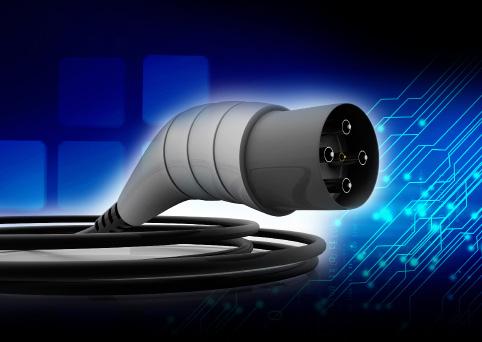

Welcome
Discover the pressures and policies behind the electrification of Britain’s company car fleets
With 2030 now a fixed deadline for the end of the sale of petrol and diesel cars, the transition to electric cars is on the brink of rapid acceleration. A number of the UK’s largest fleets had already made commitments on sustainability grounds to electrify their vehicles by 2030, if not earlier, but now every fleet decision maker knows that the switch to plug-in cars is no more than two replacement cycles away.
Exclusive research conducted for this report reveals that the pace of transition is set to increase exponentially, with significantly higher EV sales in 2021 than 2020, and then rising sharply again in 2022. Faith in the wholelife cost of electric cars remains an issue for fleets, but the new generation of battery-powered makes and models is swiftly overcoming range anxiety.

The dramatic pace of change is presenting new opportunities for car makers that previously accounted for modest fleet sales, and challenging former fleet heavyweights. It is also placing demands on leasing companies to be flexible in contract lengths; to work with fleet customers to identify the drivers and vehicles best suited to be in the vanguard of the new EV wave; and to consult on the best recharging strategy. Fleet 250 report Managing director 360 Media Group e: ian.richardson@360mediagroupltd.com w: 360mediagroupltd.com Ian Richardson
Editor
Jonathan Manning Design www.hilliard.design
every care has been taken in the completion of this
no responsibility can be accepted by either
inaccuracies
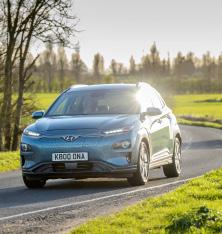
Executive summary
● Fleets are barely two replacement cycles (and just one cycle for vans) from the Government’s ban on the sale of petrol and diesel cars and vans in 2030. Some of the UK’s largest fleets, including five of its six biggest, had already made a commitment to electrify by this deadline as part of their corporate sustainability targets to reduce their carbon footprints, but a mass market transition will require more affordable vehicles, better ranges and comprehensive recharging opportunities.
● In the face of Covid-19’s squeeze on the economy, fleets face apparently conflicting objectives for the next 12 months: to cut costs and reduce emissions. Manufacturers and leasing companies still have significant work ahead to convince fleet customers that electric company cars will deliver lower wholelife costs than petrol and diesel rivals. However, fleet managers do expect the zero benefit in kind tax rating of electric company cars to persuade significant numbers of cash allowance drivers to opt back into fleet schemes.
● Fleet attitudes to electric cars have changed substantially during 2019. Traditional barriers, such as range and a limited public charge point network, are diminishing as issues, leaving acquisition cost as the principal obstacle to wider adoption.
● EV reliability is the most sought after information among fleet decision makers, indicating a nervousness about this relatively new technology. OEM websites are the most common fleet sources of EV and plug-in hybrid information, highlighting the importance of up-todate online data and advice, as well as warranties.
● Fleet EV purchasing forecasts point to an exponential growth in sales, with EV sales overtaking PHEV sales by 2022.
● Cost savings lie at the heart of fleet PHEV adoption plans, so it’s vital for fleets to impose charging discipline that ensures drivers actually plug in their cars. Fuel card and anecdotal evidence indicates that many drivers fail to plug in their PHEVs, given the cars’ limited ranges.
● Lease fleets are more likely to operate EVs and PHEVs than outright purchase fleets, due to the opportunity to amortise the higher acquisition price of plug-in cars and to the uncertainty surrounding residual values. But lease fleets are also raising their expectations of their leasing suppliers. Driver profiling tools to identify which employees could switch first to electric cars, and the option to bundle the cost of installing a home charger into a lease are both key areas where fleets are seeking assistance. A high proportion of lease fleets also warn that they are ready to seek a new supplier to find the services they want.
● The price sensitivity of the fleet sector is revealed in buying plans, with six of the top 10 most likely EV purchases costing less than £30,000, yet none is a city car. The VW e-Golf tops the table. Overall, fleets consider BMW to offer the best electric vehicle proposition, while BMW and Hyundai share the top spot for their PHEV propositions.
● Businesses expect to invest heavily over the next two years in workplace chargers to support their EV-driving employees and to recharge their own van fleets. The cost of grid upgrades, incompatible premises, and the fact that many businesses do not own their premises are the main barriers to workplace chargers.
● The Government has set a target of 2,500 ultra-fast (100kW+) public charge points on England’s motorways and A-roads by 2030, up from 1,227 today, so drivers can add 100 miles of range in the time it takes ‘to have a cup of coffee’.
Survey sources
T his report is based on an independent fleet market survey, conducted in August and September 2020, and commissioned by 360 Media Group.
The 2020 EV Barometer study explored the electrification strategy and purchasing intentions of 208 fleet decision makers responsible for company car and van fleets of all sizes. 360 Media Group undertook a similar study in December 2019, providing a useful point of comparison in attitudes to electrification, as well as pre- and post- coronavirus plans. The same research will be conducted periodically in 2021 to track changing fleet attitudes and intentions.
The raw data includes responses to all questions by fleet size, preferred funding method and decision making department (finance, HR, procurement and directors).
Please contact 360 Media for a more granular analysis of the data.
Fleet decision making department Fleet sizes of respondents
www.360mediagroupltd.com
2030 – the new deadline for decarbonisation
Within a decade UK fleets will have to transition from petrol and diesel cars and vans to electric vehicles
At last UK fleets have a clear direction to follow towards zero emission motoring, following the Government’s announcement of an end to the sale of petrol and diesel cars and vans in 2030. This tight timeframe represents little over two replacement cycles for company cars and just one for light commercial vehicles, based on current holding periods.
A number of the UK’s largest fleets had already brought forward their own deadlines for a switch to electric vehicles (EVs) to 2030, and even earlier in some cases, as part of broader corporate commitments to become carbon neutral. The UK Electric Fleets Coalition, which includes five of the UK’s six largest fleets (Royal Mail, BT Group, Centrica, SSE and DPD) among its 29 members, had been calling for internal combustion engines to be phased out in 2030. Nonetheless, its members still see the new Government target as highly challenging in terms of both the availability of suitable vehicles and recharging infrastructure.
Alistair Phillips-Davies, chief executive, SSE, said, “The next 10 years will see huge changes in how we all travel, and much work needs to
be done to deliver the required charging infrastructure for electric vehicles to facilitate this change, and to integrate them into the electricity networks. To ensure everyone can access electric vehicles and not exclude those without off-street parking, it is important that EV charging is considered as a universal service expectation.”
Members of the UK Electric Fleets Coalition are looking to wield their significant purchasing power (they operate 500,000 vehicles) and corporate influence to persuade their own suppliers to follow the carbon neutral plans.
“Diversifying our range of ultralow emission vehicles across our operations is one of many initiatives to ensure that all operations, including our supply chain, will be net zero carbon by 2035 at the latest,” said Lara Young, group carbon manager at Costain. The smart infrastructure group is transitioning its 2,600 vehicles to electric by 2030 in a move that will impact every employee with a company car and car allowance, as well as grey fleet drivers.
And at the top of the UK’s largest fleet, Stuart Simpson, CEO, Royal
2021 2021 2021 2023
Publish a Delivery Plan that sets out key milestones for the new phase out dates for petrol and diesel cars and vans.
Publish a Green Paper on the UK’s post-Brexit emissions regulations.
Launch a consultation on the phase out of new diesel HGVs.
End of current plug-in car and van grants.
Mail, said, ”We want to become a net zero carbon business with a 100% alternative fuel fleet. We want to play a leading role on this agenda. To that end, we are committed to buying more alternative fuel vehicles for our fleet.”
While sales of electric cars have soared, with battery electric up 162.2% compared to 2019 for the first 11 months of the year, and plug-in hybrid up 89.4% over the same period, their market shares remain low at 5.8% and 3.9% respectively. Moreover, the technology currently has only a negligible share of the light commercial vehicle market. Facing the prospect of phasing out the manufacture and sale of petrol and diesel cars and vans, and replacing them with batterypowered models, Mike Hawes, SMMT chief executive, said, “Success will depend on reassuring consumers that they can afford these new technologies, that they will deliver their mobility needs and, critically, that they can recharge as easily as they refuel.”
“Zero emission vehicles can be our most visible incarnation of our ability to simultaneously create jobs, strengthen British industry, cut emissions, and continue travelling,”
Case study
BT Group

“We have a target to reduce the carbon emissions intentisty of our operations by 87% by the end of March 2031. We have also pledged to become a net zero carbon business by 2045. To reach this target it’s key that we decarbonise our fleet. Openreach, which has the second largest commercial fleet in the UK, is aiming to switch out one-third of its vehicles to electric by 2025. With 33,000 vehicles, the
BT Group fleet accounts for two-thirds of our operational emissions. We are supporting a target of 100% zero emission cars and van sales by 2030, with exceptions for a small number of specialist vehicles that can’t be readily electrified by this date.”
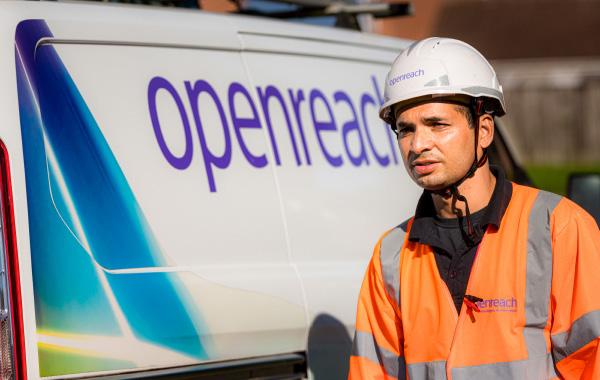
2030 2030 2035 2035
Target to have 2,500+ high powered chargers on England’s motorways and major A roads.
End of sale of new petrol and diesel cars and vans.
End of sale of plug-in hybrids.
All new cars and vans will be 100% zero emission.
Target to have 6,000 high powered charge points on England’s motorways and A-roads.
www.360mediagroupltd.com
UK Government’s Ten-Point Plan for a Green Industrial Revolution
Gabrielle Ginér, Head of Environmental Sustainability, BT Group
Government timeline
2021 fleet goals: cut costs, curb emissions
Two objectives dominate fleet intentions for the next 12 months
With fleet budgets squeezed by corporate coronavirus cutbacks, fleet decision makers face a leap of faith to accomplish their two principal goals for 2021; cutting costs and reducing emissions. Their challenge is to build confidence in business cases that the higher up-front costs of ultra-low and zero emission vehicles will be offset by subsequent lower wholelife costs of battery-powered vehicles.
Research by 360 Media Group among 208 fleet decision makers reveals that 58% aim to reduce costs in 2021. In addition, 57% have set themselves the objective to reduce emissions over the next 12 months. However, only 21% are extremely confident that switching to electric vehicles will prove cheaper than vehicles with internal combustion engines.
The total cost of ownership savings promised by EVs are based on anticipated lower fuel (energy) bills and maintenance expenditure, with electric motors having many fewer moving parts than their ICE counterparts. Furthermore, significant tax and road fund licence savings can be factored into the cost equations in favour of EVs.
Despite these ‘on paper’ advantages, more than two-thirds (68%)
of fleets are only ‘somewhat confident’ that EVs will prove cheaper to run over the life of the vehicle, and even this confidence depends on the continuation of Government subsidies to offset the higher acquisition prices of electric vehicles.
The significant involvement of company car drivers in the selection of cars does at least mean that employers looking to create a lower emission fleet have allies on their side, thanks to the zero benefit in kind tax rating for electric company cars. As more models become available that offer like-for-like body styles, fleet executives expect demand for battery-powered company cars to rise sharply. Indeed, 13% of fleet decision makers report that employees have already jettisoned their cash allowance to opt back into a company car, and 43% expect to see this develop over the next 12 months.
In addition, safety and sustainability motives are leading a number of larger businesses to encourage employees out of grey fleet vehicles and into company cars. As pharmaceutical firm Roche’s Jorge Fernández, global category manager fleet, said, “We have a certain number of car allowances that we are trying to remove. We would like to move these car allowances to company cars. We do not like grey fleet for safety reasons and for sustainability reasons.”
Fleet objectives for 2021
The proportion of fleets looking to reduce costs in 2021, their number one objective.
The percentage of fleets that are extremely confident of achieving savings by running EVs.
The share of fleets expecting cash allowance drivers to opt back into company car schemes in 2021.
www.360mediagroupltd.com
If Government EV grants were withdrawn, would this impact your plans to buy EVs?
How confident are you that EVs will be cheaper to run than combustion engines?
Do you expect drivers to opt back into your company car scheme?
2020 – the watershed year for EVs?
Two surveys conducted nine months apart reveal major changes in fleet attitudes towards zero emission power
020 has witnessed a dramatic shift in attitude towards electric company cars, with traditional barriers to battery power diminishing. Research at the end of 2019 and repeated in August and September 2020 found a significant increase in fleet confidence in zero emission technology. In particular, range anxiety is declining as new models offer longer range between charges. Significantly, 38% of job need company car drivers and 38% of all employees entitled to a company car are now eligible to choose an electric model, a powerful endorsement that battery ranges no longer compromise business operations for many drivers.
360 Media Group research also found greater faith in the UK’s recharging infrastructure, with more fast chargers making charging time less of an issue. Moreover, where more than one-in-five fleets wanted to see an increase in the number of public charging stations in December 2019 before investing in EVs, that proportion had tumbled to just 2% nine months later. This reflects both the rapid expansion of the public charging network and the growing ‘visibility’ of charge point locations as decision makers start to notice them now that electric cars are a viable proposition.
their adoption, cited by 38% of fleet decision makers as an issue that needs to change before they increase their likelihood of going electric.
Interestingly, the operating costs of EVs has shrunk dramatically as a barrier to EV adoption, suggesting that EVs have won the battle with internal combustion engines over which technology delivers lower day-to-day costs. Whether this advantage is sufficient to offset the higher acquisition cost of EVs is not yet settled. Muddying the waters further is the fact that some early adopter fleets, particularly larger corporates, are prepared to accept the higher costs of EVs as the price of minimising their carbon footprints; other fleets appear less likely to make this commitment.
Both corporate social responsibility and the practical aspect of ensuring that vehicles remain free to enter ultra-low emission zones have both risen up fleet priority lists as reasons to run EVs. As one fleet chief said, “We looked at the clean air zones and ultra-low emission zones coming in and how much effort it will be to manage those, and compared it to the effort involved in changing our fleet so we don’t have to bother with CAZs and ULEZs because all of our vehicles would be compliant.” The fleet has now committed to going electric before 2030.
The main reason to select an electric company car
The percentage of company car drivers eligible to choose an electric company car.
Maintaining access to ultra-low emission zones is the number one reason for runnning EVs for almost a quarter of fleets.
The proportion of fleets who say a lower purchase price for EVs would increase their likelihood of choosing the technology.
But the high acquisition cost of EVs remains the number one barrier to
Fleets’ EV and PHEV information needs and sources
What fleet decision makers look for and where they look is highly revealing about the plug-in car acquisition process
The percentage of fleets who seek reviews and information about the reliability of PHEVs and EVs, indicating a lack of confidence in the technology.
Half of all 100+ car fleets prioritise lead times in vehicle selection, highlighting the urgency with which they are looking to transition to plug-in cars. The figure for sub-25 car fleets is only 20%.
The percentage of fleets seeking information on brand and model reputation, reflecting the growing competition posed by challenger marques to established OEMs.

More than half of all fleets, across all size of fleet, want clear, accurate, practical information about vehicle performance, specification and price on OEM websites.
The percentage of fleets seeking total cost of ownership information. The figure is more than twice as high among director-led fleets (45%) as in HR-led fleets (20%).
The percentage of 50+ car fleets that turn to leasing company websites for EV and PHEV information. The figure is only 26% for sub-25 car fleets.
Information sought by fleets choosing EVs & PHEVS Fleets’ most important
EV and PHEV orders set to boom
Detailed research reveals a growing momentum in fleet intentions to operate zero emission vehicles
Fleet orders of pure electric and plug-in hybrid company cars are set to rise exponentially over the next three years as businesses switch to zero emission motoring.
Moreover, research by 360 Media Group has revealed that this trend is accelerating, with fleet intentions to order electric company cars being significantly stronger in September 2020 than they were at the end of 2019.
The twin investigations, nine months apart, also reveal how coronavirus has stymied fleet efforts to electrify in 2020, with fewer cars ordered this year than decision makers had forecast at the end of 2019. The industry as a whole is awash with accounts of extended contracts and postponed orders during the lockdown period, with fleet sales (ICE and EV) down by more than one-third for the first 10 months of this year compared to the same period of 2019.
However, as businesses look to emerge from the pandemic and resume vehicle renewal cycles, sourcing plug-in hybrid and pure electric vehicles as replacements for current petrol and diesel models is firmly in their plans.
The data also highlights how fleets’ short-term plans to adopt plug-in hybrids will soon be overtaken by their intentions to buy or lease battery electric models, with the transition confirmed by 2022.
If there remains a degree of flexibility in the timing of the switch to EVs, the direction of travel is clear. Some large fleets have negotiated flexible lease contracts that allow them to terminate contracts early without penalty in order to take advantage of electric alternatives when they become available. This is particularly the case for light commercial vehicle fleets where holding periods can be as long as six years. In terms of the bottom line, these newly negotiated arrangements see the higher lease rentals of shorter contracts being offset by the avoidance of higher maintenance costs and MOT fees associated with older vehicles.
It is also interesting to note how lease fleets are more likely to have a greater appetite for electric cars than fleets which outright purchase their vehicles, signalling the budgeting benefits and residual value protection of contract hire as key components in reassuring decision makers to adopt the new technology.
28% 24% 26%
The percentage of fleets intending to order at least seven new electric cars in 2022.
The percentage of fleets intending to order at least seven PHEV cars in 2022.
The percentage of lease fleets planning to order at least seven electric cars in 2022, compared to just 16% of outright purchase fleets.
Electric car order intentions 2020-2022 PHEV car order intentions, 2020-2022
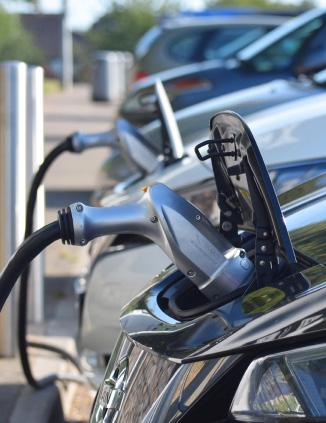
Cost savings drive fleet PHEV agenda
Tight fuel management is required to ensure company car drivers maximise miles driven on electric power
The opportunity for cost savings is by far the most significant reason for fleet decision makers to consider plug-in hybrid company cars. More than half (52%) of fleets see fuel savings as their primary reason to adopt PHEVs.
The finding is potentially troublesome for fleet budgets unless fleet operators implement strict fuel management procedures. Fuel card evidence and anecdotal accounts both suggest that in many instances company car drivers tire of the responsibility for recharging their PHEVs for such limited electric-only ranges and end up powering their cars with petrol alone. Limited zero emission range is actually the third highest barrier to PHEV uptake. Where PHEVs are driven purely on petrol, an equivalent diesel car would be more cost effective in terms of fuel and have a smaller carbon footprint. However, only 5% of decision makers are unconvinced of the sustainability arguments in favour of PHEVs.
Saving on fuel spend also plays an important role in offsetting the higher acquisition price of PHEVs – high perceived list prices are the number one obstacle to PHEV adoption.
But fleet philosophy is not all about the bottom line, with environmental reasons to operate PHEVs high on the agenda.
Research by 360 Media Group has found that over one third (37%) of fleets view PHEVs as a way to plan for a more sustainable future, while 28% are future-proofing their access to urban ultra-low emission zones by selecting cars capable of running on electric power alone.
Interestingly, the benefit to drivers and finance departments of
minimising company car tax and the associated National Insurance contributions, is a much lower incentive to adopt PHEVs, while fewer than one in five fleets report driver demand drawing them towards plug-in technology.
Fleet motives for buying a PHEV
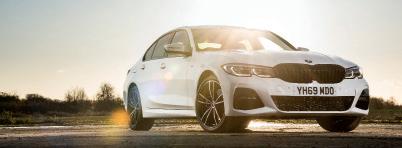
The percentage of fleets intending to buy at least one PHEV in the next 24 months
Lease fleets more likely to adopt PHEVs
Businesses that contract hire their company cars are significantly more likely to buy plug-in hybrid electric vehicles than outright purchase fleets. The opportunity to amortise the higher cost of a PHEV, compared with
an equivalent ICE model, and the peace of mind of avoiding residual value risk on a new technology means lease fleets have a greater appetite for PHEVs.
This helps to explain why 37% of outright purchase fleets see the list price
of PHEVs as a barrier to uptake, compared with 30% of lease fleets.
Demand for used PHEVs has been high over the past year, but forecasters now see their values slipping as the range and desirability of pure electric vehicles rises.
PHEV buying intentions by funding
Number of PHEV
www.360mediagroupltd.com
PHEVs raise prospects for challenger brands
The development of plug-in hybrid technology is shaking up traditional fleet attitudes towards car manufacturers
Research by 360 Media has found that Hyundai now rivals BMW as the brand with the best PHEV proposition, in the eyes of fleet decision makers, with Toyota, Ford and Audi making up the rest of the top five. No single manufacturer’s PHEV range offers a commanding proposition, and the high ranking of certain marques indicates a degree of market confusion between plug-in hybrid and hybrid models. Fleet decision makers also identified Hyundai as the manufacturer most likely to provide their next PHEV, followed by Ford, BMW and Volkswagen. At the other end of the scale, a long tail indicates that several key fleet manufacturers are simply not considered when fleets look for new PHEV company cars.
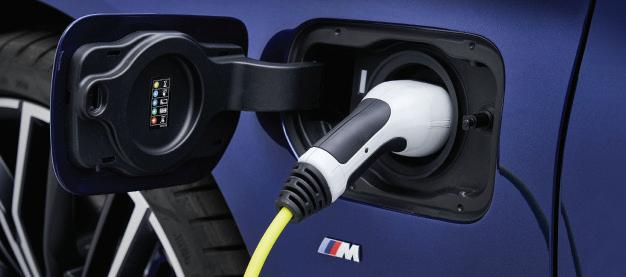
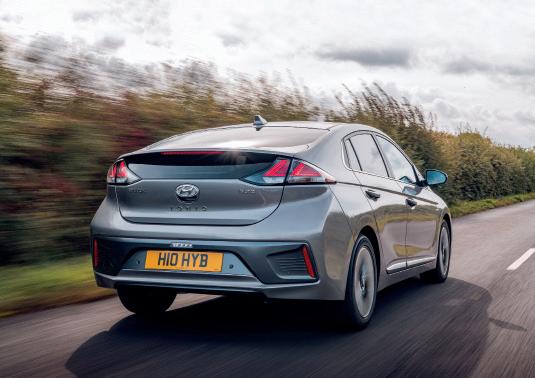
“Hyundai now rivals BMW as the brand with the best PHEV proposition, in the eyes of fleet decision makers”
Best overall PHEV proposition
New technology: familiar fleet favourite Fleet attitudes to OEMs’ EV
Fleets are selecting individual models, rather than manufacturer model ranges, when choosing electric cars
Fleets’ electric car ordering intentions reveal how practicality, model familiarity and price sensitivity dominate their selection criteria.
While city cars, such as the Renault Zoe, Peugeot e-208, Seat Mii and Volkswagen e-Up offer the cheapest entry point to electric motoring, companies are typically seeking more interior space and a longer range when choosing company cars.
Based on these criteria, the Volkswagen e-Golf hits the sweetspot, an established fleet favourite transformed to battery power.
Within fleets’ top 10 most likely next EV orders, six cars have official list prices of £30,000 or less (including the £3,000 Government grant). Fleet purchasing intentions also highlight how Nissan and Hyundai, in particular, are mounting a successful challenge to long established fleet manufacturers in the electric space.

BMW has the best overall electric car proposition in the eyes of fleet decision makers, selected by more executives as their first ranked manufacturer. BMW is also cumulatively the highest ranked OEM in terms of its electric proposition, when first, second and third placed rankings are taken into account.
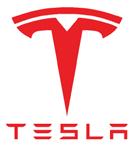
Tesla has won the respect of fleet decision makers for its overall electric car proposition, but its lack of models at the cheaper end of the spectrum means that if it is not ranked number one in the eyes of a fleet executive it is less likely to feature on choice lists than other brands.
www.360mediagroupltd.com
and PHEV models
Research reveals the plug-in company cars at the top of fleet shopping lists
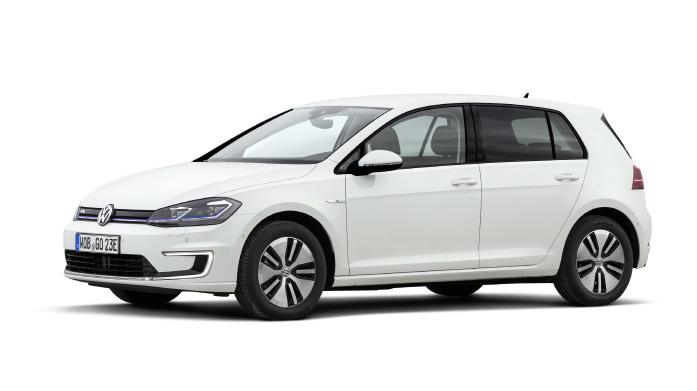
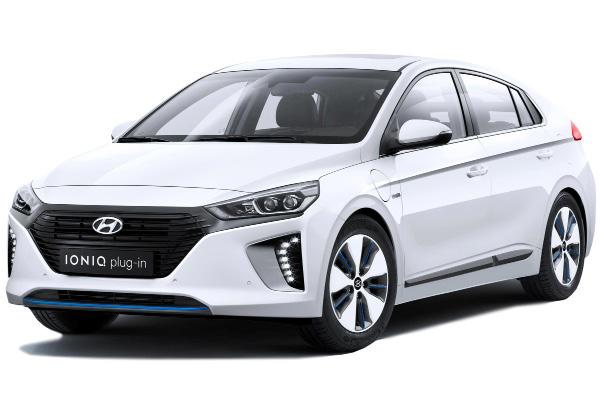

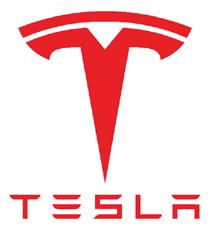

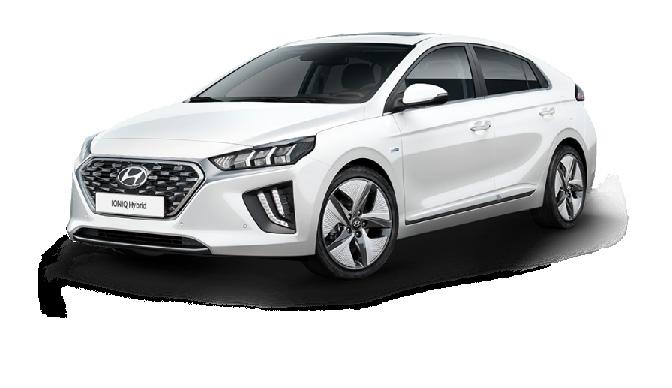
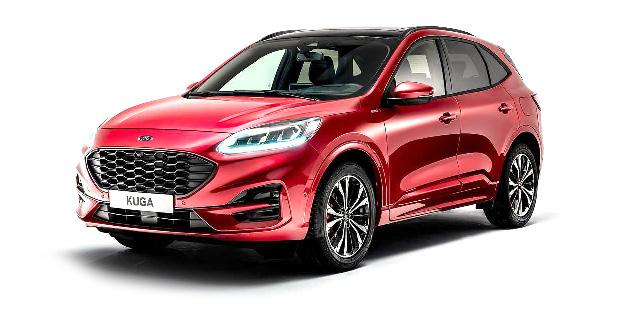


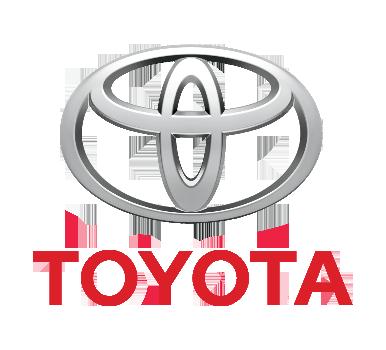
Electrification places new demands on lease co’s
Of all their key suppliers, fleets are more likely to change their leasing company or add another to their basket as they seek support with electric cars
The rapid transition of fleets to electric cars is presenting new opportunities for leasing companies to offer consultancy advice and bundle additional services within the lease rental.
Fleets of all sizes are eager for this first generation of batterypowered cars to be supplied with a home charger included within

the lease, thereby delegating responsibility for the charge installation to the leasing company and amortising the charger’s cost over the term of the lease.
Decision makers are also seeking payment solutions for EV charging, particularly services that could open access to wider networks of public chargers and deliver invoicing efficiency. Calculating a fair business mileage reimbursement remains difficult given the challenge of reconciling charge costs from home, workplace and public chargers. But with fuel savings a key element in favour of electric cars, minimising mileage reimbursement costs is vital.
In these early days of electrification, there is also considerable demand for services that help fleets identify which drivers and vehicles should transition first to battery power, with 29% of fleets keen on driver profiling tools (especially if they are free). Broader support for emissions reduction initiatives is the primary reason for a fleet to seek a new leasing supplier, and scores particularly highly among fleets operating six to 49 company cars.
This same cohort also prioritises flexible contract terms, which is less of an issue for larger fleets (100+ cars) that have greater opportunities to reallocate vehicles. Leasing companies are more likely to win conquest business in the large fleet sector by delivering better reporting tools and administrative support.
As one manager of a large fleet said, “Lease co’s need to provide more beneficial advice that would benefit our business rather than giving a sales pitch for their particular product.”
Fleet requirements from leasing companies Fleets planning to change / add suppliers by sector
The surge in demand for workplace charge points
The next two years will see a rapid expansion in the number of company car park spaces with an EV charger
Businesses are set to invest heavily in workplace charge points over the next two years to support their fleet electrification plans.
The isolated incidence of workplace chargers in high profile bays close to office doors looks set to be replaced by the mass introduction of chargers throughout car parks as employers facilitate staff, both private and company car drivers, to top up their car batteries during working hours.
Consultancy Delta-EE forecasts that the UK electric vehicle charge point market is set for 29% year-on-year growth in sales through to 2030, with workplace charging enjoying the biggest growth, even if domestic sales account for the lion’s share (71%) of the market.
John Murray, head of EVs at Delta-EE, said, “The reality is that for people with EVs, and no access to off-street parking, they will need to charge their vehicles somehow, and workplace charging will still play a very important role in this.”
“The
reality is that for people with EVs, and no access to off-street parking, they will need to charge their vehicles somehow, and workplace charging will still play a very important role”
Businesses with light commercial vehicles see a particular need to install workplace charge points, a reflection that many of these vehicles do not return to drivers’ domestic addresses overnight.
There also appears to be a growing reflection that business visitors will expect to be able to top up their car batteries while they are parked. A handful of businesses even see the possibility of opening access to their chargers to members of the public, either in a bid to be good corporate citizens or to recoup some of the investment costs in installing chargers.
As momentum towards a battery-powered future builds, the chronology of these investment plans sees greater investment in 2022 than 2021, which in turn looks likely to be higher than 2020. There are even indications that plans to install workplace chargers are running ahead of company plans to buy electric vehicles, with a surge in businesses set to install 16 or more chargers over the next two years.
Workplace charge point investment plans, 2020-22
The forecast increase in businesses installing 21 to 25 charge points between 2020 and 2022.
The percentage of businesses installing charge points to recharge their van fleets.
One-in-five businesses still have no plans to install charge points, regardless of their electrification plans.
Employer reasons to install workplace chargers
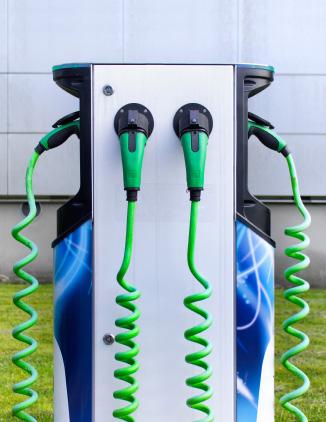
www.360mediagroupltd.com
Obstacles to workplace charge points Timeline to EV takeover
Filling company car parks with EV chargers is proving difficult for many fleets
Fleets require practical assistance to negotiate procedures for the installation of electric vehicle charge points in workplace car parks. Complications with property ownership are thwarting some early attempts to introduce chargers to company car parks, with almost one-in-five (19%) fleet decision makers citing the fact that they do not own their premises as a major barrier to workplace chargers. The UK Electric Fleets Coalition’s policy document calls on the Government to: “Cut red tape that inhibits the roll-out of charging at leased premises and to… introduce a ‘presumption of approval’ for EV charging on leased properties.” It also proposes an update to Building Regulations to ensure new developments and offices have sufficient fast-charging integrated to be fit for future demand.
Capacity within the local grid is currently the biggest obstacle to mass installation initiatives, with 35% of businesses identifying the potential cost of upgrading local infrastructure as being prohibitively expensive. This is, however, an issue where distribution network operators, energy firms and charge point experts have developed a glut of solutions, based on smart charging techniques.
With fleet EV charging likely to follow a blended approach of domestic, workplace and public chargers, decision makers have considerable work ahead to establish fair and cost effective mileage reimbursement rates for electricity used to power business journeys. The larger the fleet, the more confidence the decision maker has in their knowledge of EV charging, a reflection that they are also likely to have fleet responsibility as a larger part of their job role. On the flip side, there appears to be a considerable opportunity to offer consultancy to businesses operating fleets of up to 50 vehicles.
Barriers to installation of workplace charge points
No more petrol and diesel car and van sales
● 2,500 Government target for ultra-fast public chargers (100kW+)
